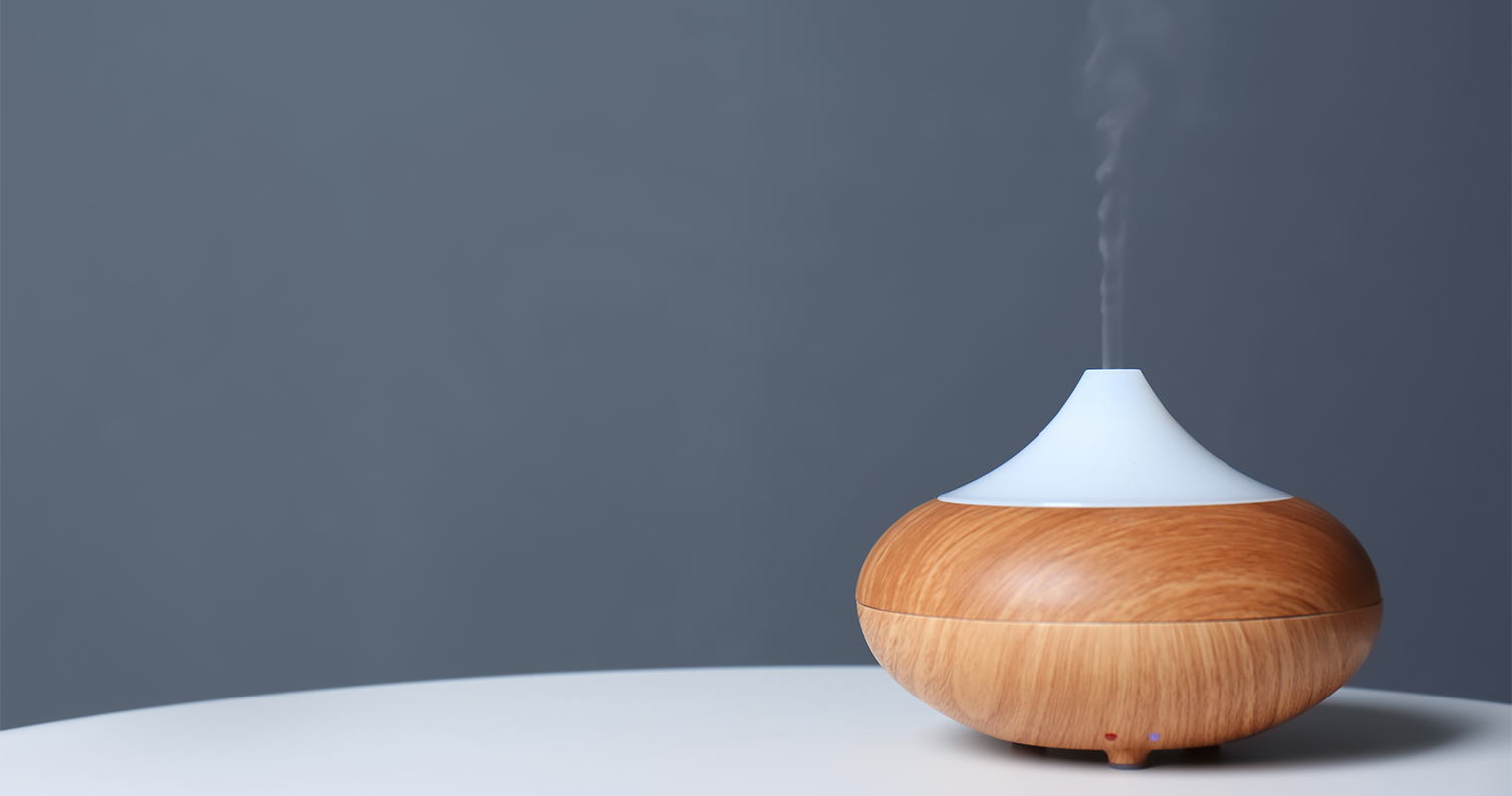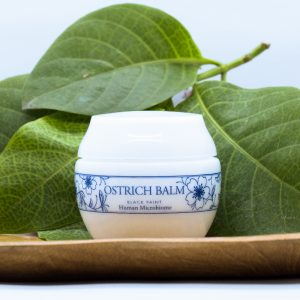The use of Clary sage oil for acne is due to its cleansing property which makes this essential oil so desirable in skincare today. In fact, did you know that clary oil gets its name from the Latin word ‘clarus’ which means ‘clarifying’ or ‘cleansing’?
What is clary sage oil?
Clary sage oil is an essential oil derived from the flowers, seeds and leaves of the plant Salvia Sclarea. This bright, lilac-flowered herb is native to the Mediterranean basin – Italy, Southern France and Syria. The oil is colorless to light-olive with a sweet, herbaceous odor and hints of nutty and woody aromas. It is considered as one of the oldest natural remedies in human history and a rare and prized possession for generations.
With its diverse medicinal uses in healing both the mind and body, clary sage oil is considered sacred and used by ancient apothecaries in healing tonics. It is also rightly called the ‘woman’s oil’ because of its many unique and amazing benefits to women’s health. The cleansing, antiseptic and healing properties of clary sage oil is especially useful to treat acne.
What is acne?
Acne or acne vulgaris is a skin condition that distresses the skin’s oil glands and hair follicles. It is a chronic inflammatory condition that manifests in the form of spots and pimples. Acne occurs on the neck, back, shoulders, chest, upper arms and most of all, on the face.
Acne affects people of all ages, but especially teenagers, who are prone to hormonal fluctuations. While mostly mild, acne can be a really painful and a long-term issue for some. Not just that – their unsightly appearance and the scars left behind can ruin self-image and diminish self-esteem.

Treating acne with harsh chemicals and prescription or over-the-counter medication is no permanent solution. They only treat the symptoms and cause further skin irritation – making the problem worse. Plus, with the many other side effects, they’re not worth it, especially over the long term.
Natural therapy with plant-based remedies and skincare products that contain natural ingredients prove as better alternatives.
What causes acne?
Acne is caused by the blockage of the hair follicles with oil, dead skin, dirt and hair.
The skin produces an oily substance called sebum to keep itself from drying out. Sebum is produced in sebaceous glands located close to the skin’s surface. It is transported through channels called follicles and is deposited on the skin’s surface through tiny holes or pores.
Acne results from the excessive production of sebum. The dead skin cells and dirt mix with this excess sebum to form a plug that blocks the follicles. In cases where the plug is close to the skin’s surface, it bulges outwards to form a whitehead. On the other hand, if the plugged follicle opens to the skin through the pore, it forms a blackhead.

There are a number of normally harmless microbes that reside on the skin’s surface. However, in acne, they often contaminate and infect these plugged follicles. This results in the more painful symptoms of acne – papules, pustules, nodes and cysts. The skin becomes inflamed and therefore prone to further damage of wounds, scars and premature aging.
However, these are only the activities on the skin. There are a number of factors that cause these abnormalities and make the skin prone to acne.
What is acne-prone skin? Do I have acne-prone skin?
Some skin-types have a propensity to develop acne. The most common is the oily skin-type because acne is most closely associated with the excessive production of sebum. Acne-prone skin is typically characterized as shiny and oily.
However, external and environmental factors can also lead to acne. The most common among them is poor skin care. Bad skincare routine and using low quality products can cause skin irritation and clogged pores. As a result, even those with dry skin can often be riddled with acne.

What factors drive acne?
While acne manifests physically as a superficial condition, there could be a number of external and internal factors that drive it. Following are some of them:
- Infections
- Genetic predisposition
- Diet
- Hormonal changes
- Stress
A number of the factors like genetic predisposition are beyond control. However, lifestyle and skincare routine can play a major role in controlling acne. It also comes down to simply using the right skincare products and ingredients to treat the skin.
How does clary sage oil work against acne?
Clary sage oil’s rich and unique bio-active composition attributes this oil several properties that effectively fight acne and its underlying causes.
Bioactive compounds in clary sage oil
Linalyl acetate
One of the effective ways of controlling acne is to regulate the skin’s production of sebum. Linalyl acetate plays the part in clary sage oil. It ensures that the skin is neither too oily nor too flaky. It also soothes and calms the skin by relieving redness and itching.
Alpha-terpineol
Clary sage oil is abundant in alpha-terpineol, a compound which imparts the oil its sweet, woody scent. It is known for its inhibitory effect on microorganisms. It prevents acne from becoming infected and inflamed.
Additionally, alpha-terpineol increases the penetrative power of clary oil. This allows the other bioactive compounds to be deeply absorbed by the skin to fight against acne.
Rosmarinic acid and ellagic acid
These are the most abundant flavonoids present in clary sage oil. Flavonoids are bioactive phytochemicals with anti-inflammatory and antioxidant properties which protect skin from damage caused by acne.
Caryophyllene
Skin healing is an important aspect of fighting acne and caryophyllene imparts this property to clary sage oil. It has strong antioxidant properties that neutralize the free radicals on the skin and prevent oxidation. Not only does this protect the skin from further damage but also encourages its rejuvenation.
Fatty acids
Clary sage oil is a good source of fatty acids like linolenic acid, oleic acid and linoleic acid. These acids work in combination to keep the skin moisturized and protected from external factors. They also provide a skin barrier from UV exposure and therefore prevent irritation and inflammation. Fatty acids indirectly contribute to clary oil’s effect against acne.
Anti-acne properties of clary sage oil
Antimicrobial / antiseptic property
Research suggests that one of the culprits of acne is a strain of bacteria called the Propionibacterium acnes or P. acnes. This bacteria feeds off the components of excess sebum to trigger inflammation. When unchecked, this continued trigger leads to red, itchy breakouts.
Clary sage oil inhibits the rapid growth of P. acnes thereby reducing inflammation and acne.
Anti-inflammatory property
The flavonoids and terpenes in clary sage oil reduce inflammation caused by bacterial infection.
Inflammation is one the primary causes of skin damage. It catalyzes the production of certain enzymes that reduce the activity of skin proteins like collagen.
Collagen is usually responsible for keeping the skin young and supple. With collagen activity reduced, the skin becomes prone to premature aging. Clary oil’s anti-inflammatory property mitigates skin damage caused by acne.
Antioxidant property
Bacterial activity in breakouts causes increased oxidation on the skin’s surface. Oxidation leads to the production of free radicals. These free radicals are highly reactive and have the potential to react with the skin cells and damage them.
The bioactive compounds in clary sage oil have a neutralizing effect on free radicals. They work as antioxidants to keep the skin young and healthy.
Astringent property
Clary sage oil is volatile in nature and when applied to the skin, it works as an astringent. It cleanses out the pores off excess oil and dirt and also closes them. Clean and closed pores make the skin less prone to acne.
Anti-melanogenic property
Melanin is the natural pigment in the skin that imparts its color and tone. Acne can leave behind ugly scars and dark spots due to the irregular production of melanin which happens as a result of inflammation.
Clary sage oil has a whitening effect on these spots to even out skin tone and promote flawless skin.
Benefits of clary oil for acne-prone skin
With the above bioactive composition and desirable anti-acne properties, clary oil can potentially serve as long-term acne treatment. This is one of the major advantages of plant-based skin therapy over chemical treatment which usually comes with unpleasant side effects.
It regulates and controls oil production
This is extremely desirable, not only for oily skin but also dry skin – the two most problematic skin-types. Clary sage can help strike the middle ground between sticky, greasy skin and flaky, dehydrated skin.
It calms the skin
Topical application of clary sage oil reduces acne-induced redness and pain associated with inflammation. It is also great for those with highly reactive and sensitive skin-types. However, like all essential oils, it’s important to use clary sage oil in low concentrations and diluted with a carrier oil.

It repairs the skin and helps heal acne
Acne can be painful, especially when it becomes inflamed, some of it forming wounds. Clary sage oil speeds up the healing process by increasing the action of collagen tissues.
Black Paint’s Ostrich Balm combines the excellent healing powers of clary sage oil with that of ostrich oil to effectively heal damaged skin. Its anti-inflammatory properties pacify redness caused by acne and calms skin irritations. This balm is suitable for those with sensitive and acne-prone skin.
Ostrich balm not only soothes the skin, it also nourishes it deeply. It contains clary sage oil mixed with 20 other premium grade Ecocert organic plant oils. This blend, rich with omega, replenishes the collagen under the skin to promote healing and repair. Collagen replenishment also ensures protecting the skin from premature aging, a likely result of acne-damaged skin.
It protects the skin from further breakouts and damage
By neutralizing the oxidants and therefore reducing the oxidative stress on the skin, clary sage oil protects the skin from further damage. It’s antiseptic, anti-inflammatory properties reduce the chances of further breakouts.
It improves blood circulation
Aromatherapy with clary sage oil promotes blood circulation. This not only improves the skin’s appearance but also regulates sebum production in the skin.

Lightens scars and hyper-pigment spots caused by acne
Even after healing, acne serves as a notorious culprit. It leaves behind its mark in the form of spots caused by the abnormal production of the skin pigment, melanin. Clary sage oil’s anti-melanogenic property offers an excellent solution to this common problem seen in acne-prone skin.
It reduces stress levels and restores hormonal balance
Stress leads to the overproduction of the hormone cortisol and leads to hormonal imbalance. This is one of the major causes of acne in many people.
Clary sage oil works not only directly on the skin but also indirectly by calming the mind to reduce the chances of breakouts. Its sweet, woody odor makes it a great addition to oil blends in aromatherapy. It works as a sedative to relax the mind and remove mental stress thereby reducing cortisol levels and balancing the hormones.

Applications of clary sage oil
The benefits of clary oil seem great but how to use clary oil? Here are some simple and excellent DIY ways to make the most of this oil.
In moisturizing creams
Clary oil makes an excellent addition to moisturizing creams for oily and dry skin alike. It hydrates the skin without clogging the pores.
Mix 1-3 drops of clary sage oil to your regular body lotion or face cream before massaging with it.
As a natural face wash
For oil-congested skin, combine 20 drops of clary sage oil with 1 tbsp of coconut oil as a carrier. Add 3 tbsp of raw honey, 2 capsules of live probiotics and 1 tbsp apple cider vinegar. Mix these ingredients thoroughly to make your own natural anti-acne face wash.
Our skin consists of a microbiome of a number of different species of bacteria – some of which are harmful, some harmless and others useful for skin health. It is not always beneficial to wipe out all bacteria from the skin’s surface for acne treatment – the approach followed by prescription and over-the-counter medication.

Clary sage oil fights against abnormal harmful bacterial growth on the skin caused by acne. On the other hand, topical probiotics such as Lactobacillus can help replenish the good bacteria and for a healthy microbiome. This combination not only provides the skin protection from inflammation, damage and aging but also promotes younger-looking, radiant and healthy skin.
Black Paint’s products use probiotics to restore a natural and healthy skin microbiome. Our approach to skincare is with the attitude of nourishing rather than sterilizing. We believe in restoring balance and harmony as long-term solutions rather than fighting symptoms in the short-term.
In massage blends
Mix clary sage oil with a carrier oil like almond oil or jojoba oil in a 2% diluted ratio i.e., 8-9 drops every 3tsp of carrier oil. Whisk them thoroughly and massage into skin for a hydrating, soothing and calming effect.
In aromatherapy
For a mood-enhancing and relaxing diffuser oil blend, mix 3 drops of clary sage oil with 2 drops of orange oil, 2 drops of ginger oil and 1 drop of bergamot oil.

Precautions
- Pregnant or breastfeeding women should seek the advice of a physician before using clary sage oil.
- Do not ingest clary sage oil.
- While rare, some people have shown allergic reactions and have complained about irritation upon exposure. A patch test is a good idea before trying any new ingredient or product on the skin.
Why is clary sage oil expensive?
Clary sage oil is considered as one of the rarest and most expensive essential oils. To understand why that is the case, it’s important to learn its production process.
How is clary sage oil produced?
The flowers, seeds and leaves of the Salvia sclarea plant are collected at the end of the blooming season. The level of oil in the plant is highest at this time. Cutting and bundling takes place in the afternoon when the level of oil is at the daily peak.
However, these activities cannot be carried out if it’s too sunny or hot or rainy – heat vaporizes the oil and humidity reduces the yield. This makes the harvesting process difficult and one that requires great care.
After harvesting, the woody stalks are separated since they contribute virtually no oil. The harvest is then quickly processed to avoid losing the precious oil to evaporation.

Steam distillation is used to extract the oil. The yield is extremely low – generally between 0.15-0.4%!
High production cost
It is evident that the production of clary sage oil is extremely difficult and specific. It is a labor and care-intensive process, which in the end, results in a very low yield. It’s no wonder that it is expensive! Many connoisseurs consider clary sage oil as a rare and prized possession.
Implications on quality
It’s not at all surprising that the quality of clary sage oil has immense variations. Using low-quality and adulterated oils to mimic the scent and properties of precious oils is no news in the cosmetic and skincare industry.
This is exactly why it’s important to prioritize quality and go for a trusted brand while buying clary sage oil or any products containing it.
Black Paint uses original and high quality clary sage oil despite its high price. We believe that our customers deserve the best quality products for their skin. The benefits of this precious oil easily overshadow the cost and make every penny count.
Alternatives to clary sage oil for acne treatment
Considering the rareness and preciousness of clary sage oil, it might even be worth the effort to consider some alternatives. Thankfully, the organic plant world offers a number of natural solutions when it comes to treating acne, some of which include:
- Tea tree oil
- Eucalyptus oil
- Green tea oil
- Peppermint oil
- Argan oil
- Jojoba oil
- Perilla oil
- Groundnut oil
- Lavender oil
- Avocado oil
- Rosemary oil
References
https://www.ncbi.nlm.nih.gov/pmc/articles/PMC4740760/
https://www.stylecraze.com/articles/uses-and-benefits-of-clary-sage-essential-oil/
https://www.puristry.com/blogs/the-routine/sage-oil-for-clearer-skin
https://www.sciencedirect.com/science/article/pii/S2225411017300056
https://virily.com/beauty-health/7-shocking-clary-sage-oil-benefits-for-skin/
https://monq.com/eo/essential-oils/sage/
https://www.newdirectionsaromatics.com/blog/products/all-about-sage-oil.html
https://www.decleor.com/en/oil-effects/draining/clary-sage.html
https://www.newdirectionsaromatics.com/blog/products/all-about-clary-sage-oil.html
https://www.quinessence.com/blog/clary-sage-essential-oil#:~:text=Clary%20sage%20essential%20oil%20is,of%20the%20herb%20Salvia%20sclarea.&text=Many%20connoisseurs%20believe%20the%20English,to%20the%20cost%20of%20labour.



 Ostrich Balm
Ostrich Balm



